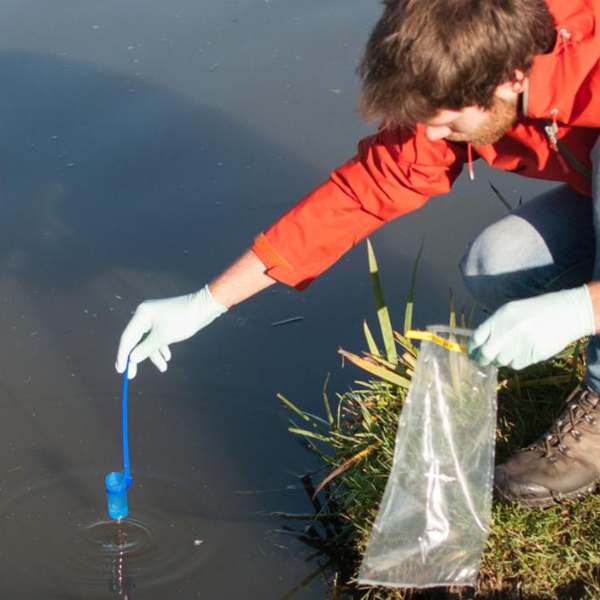Smart application of eDNA technology in water management

Smart application of eDNA technology in water management
Witteveen+Bos, Datura and seven water authorities have taken the initiative, with support from STOWA, to identify the added value of ‘eDNA food web analysis’ for the management of water and water quality by applying it in practice. The objective is to gain experience with the technology so as to clear away barriers for large-scale usage. The project officially got under way on 14 February 2017.
The success or failure of water management hinges on the quality of the data available. New and highly promising monitoring techniques developed in the recent past enable not only faster and cheaper monitoring but also revolutionary improvement of data quality and availability. One of these new techniques is the innovative application of eDNA (Environmental DNA): the eDNA food web analysis.
What makes this method unique is that it yields a total picture of life below water (i.e. the ecological condition) with just one water sample. It gives water authorities a complete impression of the quantity of eDNA of fish, algae and zooplankton, bacteria and other ‘eukaryotes’. By comparing the quantity of eDNA with other samples, a picture emerges of the composition of the food web. This can have far-reaching consequences for our knowledge of life below water and for the management of water.
The knowledge thus acquired will help us to understand how the water system works ecologically and what can be done to improve the ecological quality of water. The method ties in seamlessly with the system of Key Ecological Factors developed by the STOWA research foundation especially to enable water authorities to analyse water quality. The new method is likely to be around 90% cheaper than conventional sampling methods. Moreover, the eDNA analyses are simpler, faster and provide a far more robust and all-embracing result.
It was decided to adopt a phased approach to this project in the 2017-2021 period, with the first step aimed at gaining together with water authorities some experience with the technique and, subsequently, fleshing out the technique scientifically. Ultimately, a standardised method will become available that will be usable on a large scale. Seven water authorities (Brabantse Delta, Waternet, Hollands Noorderkwartier, Hunze en Aas, Fryslân, Drents Overijsselse Delta and Delfland) submitted cases that embodied a variety of questions. All samples will be taken in the 2017 growing season. The results of the analyses will be available in autumn 2017. Depending upon the outcomes, the next steps will be mapped out for the project.